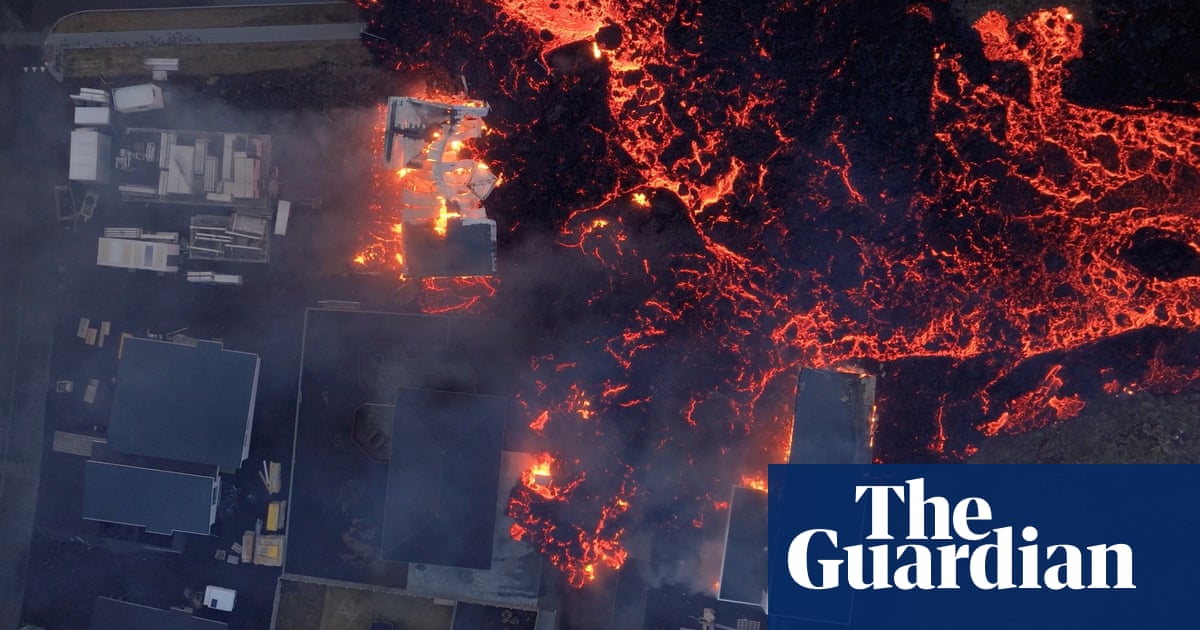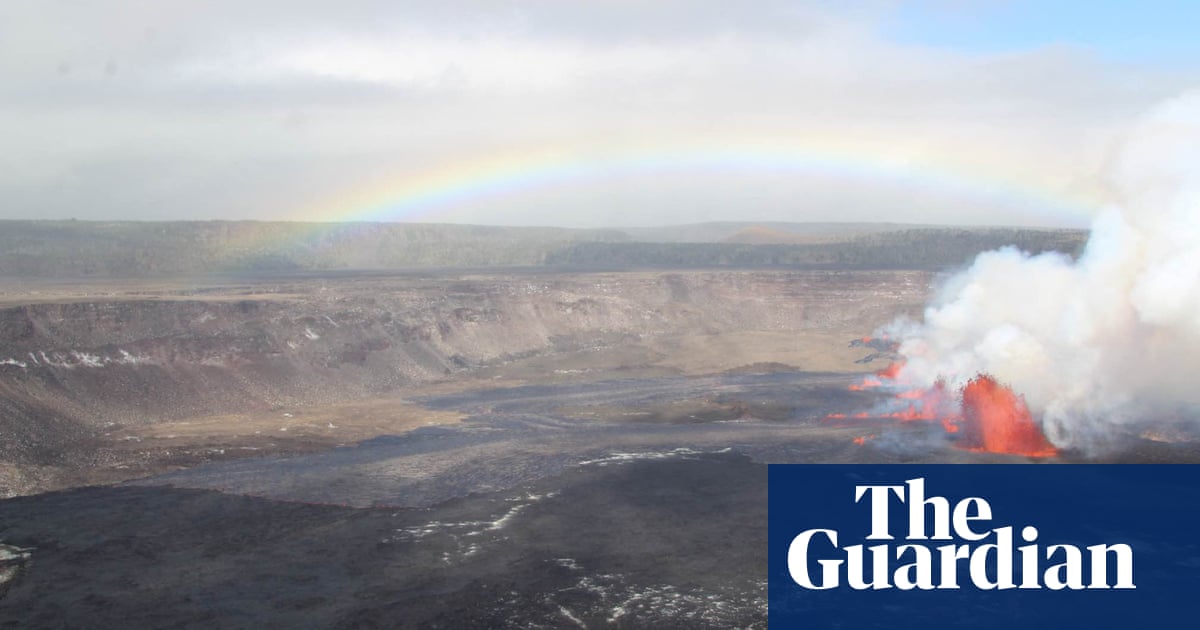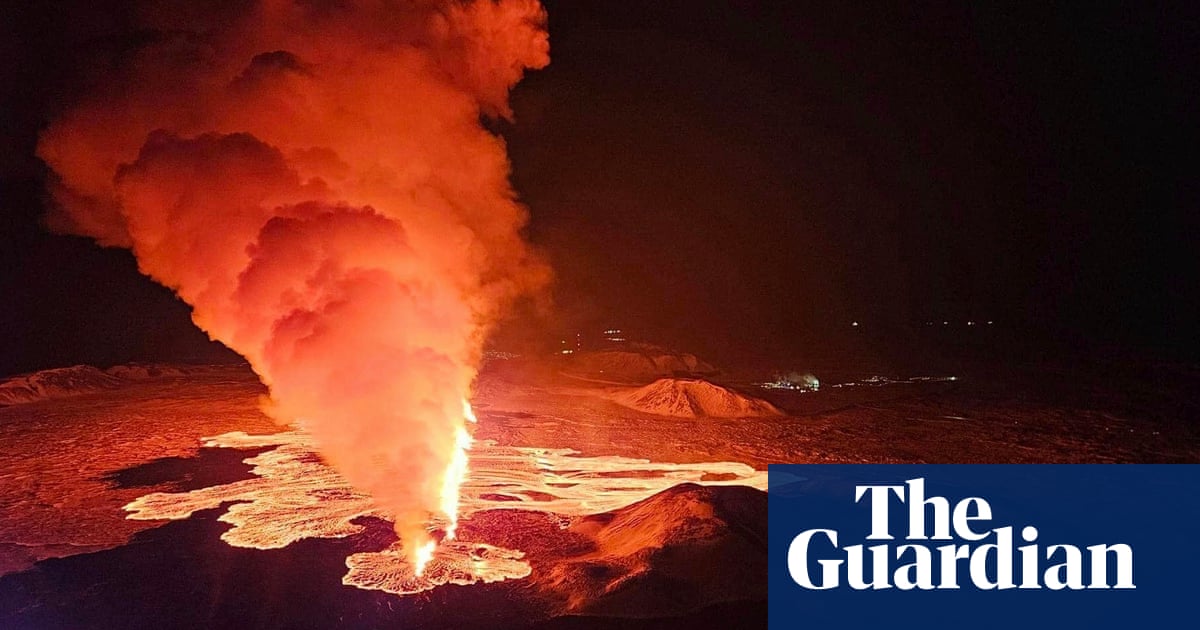
Residents of the Icelandic town of Grindavík fear they may not be able to return to their homes after volcanic lava destroyed several houses and damaged water and electricity supplies.
The Fagradalsfjall volcano erupted for the second time in less than a month on Sunday morning, hours after the authorities had instructed residents to leave the fishing town in the south-west of the island after a “swarm” of mini-earthquakes suggested an eruption was imminent.
David Ingi Bustion, 31, an architect whose family has lived in the town for three generations, said the latest fissures had left Grindavík’s 3,800 residents in limbo, with some questioning whether the town would ever be habitable again.
“We don’t know what will happen now. It has thrown a question mark over people’s lives,” Bustion said. “A few houses have burned but the water pipes and electricity have been damaged so there is no heating and it’s been really cold.”
The volcano appeared to be less active on Monday but the Icelandic meteorological office said in a statement that the area was high-risk and new fissures could open without warning.
“It is difficult to estimate how long this eruption will last,” it added.
The eruption – the fifth to hit the Reykjanes peninsula since 2021 – places the residents of Grindavík in a new state of uncertainty.
A powerful volcanic eruption occurred near the town on 18 December after weeks of earthquakes, but Grindavík’s inhabitants had already been evacuated as a precaution. More than 100 people had returned in recent weeks, only to be evacuated again at the weekend.
“Most of our family had moved back to Grindavík and were there when it happened. At 3am Sunday morning they were woken up by sirens and had to flee. People have reacted differently, but one of my cousins was very startled. Most people didn’t know if it was going to affect the town and just had to get their stuff and leave,” Bustion said.
“From what we have been told it doesn’t seem like there will be any more direct destruction inside the town, but the problem is there is no water or heating.”
For the residents of Grindavík, which sits about 25 miles (40km) south-west of the Icelandic capital, Reykjavík, the latest eruption was a setback, Bustion said. “We were all going to move back and there’s been a lot of effort to that end. I’m an architect and my company was going to make a new town centre project pro bono, but today it’s hard to know if the town will be habitable again. It’s too soon to tell.”
He added: “People living in Iceland have been quite fortunate economically and life has been quite stable but this episode but a big question mark over our lives. Many people have mortgages on property that is basically worthless now.”
The eruptions have caused no confirmed deaths but a man is missing after reportedly falling into a fissure.
Iceland’s president, Guðni Th Jóhannesson, said in a televised address late on Sunday the country was battling “tremendous forces of nature”.
“A daunting period of upheaval has begun,” he said. “We continue to hope for as good an outcome as possible … We will carry on with our responsibilities and we will continue to stand together.”
Magnús Tumi Guðmundsson, a geophysicist at the University of Iceland, said on Monday the volcanic activity had decreased considerably overnight but it was impossible to say when it would end.
Iceland sits above a volcanic hotspot in the north Atlantic and averages one eruption every four to five years. The most disruptive in recent times was the 2010 eruption of the Eyjafjallajokull volcano, which spewed clouds of ash into the atmosphere and disrupted air travel for months.
Live video footage on Monday showed orange lava still flowing to the surface but apparently at smaller volumes and further away from Grindavík. Geologists on Sunday said magma corridors were believed to be flowing underneath the abandoned town, however, posing continued risk.
“Unfortunately [the lava] went a little bit more south than we had hoped for,” the head of Iceland’s civil protection and emergency management, Víðir Reynisson, told a press conference late on Sunday. He said defensive barriers built to the north of the town had helped divert the flows of lava to the west, away from Grindavík.
“This is serious, it’s basically as bad as it can possibly get. Although it might get even worse, who knows,” one evacuated resident, Jon Gauti Dagbjartsson, told Reuters late on Sunday. “I live in the house that I was born in and it’s a tough thought to think that this town might be over, and I would have to start all over somewhere else. But if that’s the case, then that’s exactly what we’ll do.”
The Icelandic government is meeting on Monday to decide on support for the people of Grindavík. “We need to put a lot of extra efforts into finding more housing, suitable housing,” the prime minister, Katrin Jakobsdóttir, said.
On Monday tourists spoke of the “very scary” moment when they realised an eruption was under way.
Kate Coppola, 29, a reinsurance broker, and her boyfriend, Tom Hawkins, 28, both Australians living in London, were staying at the Blue Lagoon hotel near Grindavík to see the northern lights when they were forced to evacuate.
“We went to bed on Saturday night and everything was normal. I woke up around 3.30am and felt a series of small shakes which at first I thought was my boyfriend twitching in his sleep. Then I thought perhaps I’d imagined it but as I was awake and as we were there to see the northern lights I went to the window. That’s when a bigger earthquake hit and the glass rattled so I knew it was an earthquake.
“I woke Tom up and we just sat there, then around 3.45am I had a message on my phone saying ‘evacuate, evacuate’. A wave of sickness came over me and I threw a jacket over my pyjamas and was heading for reception to ask what the procedure was but the hotel alarms went off and in the corridor a member of staff said we needed to evacuate.”










